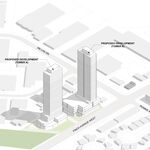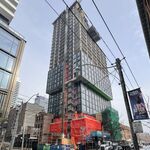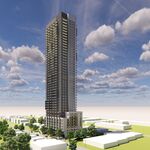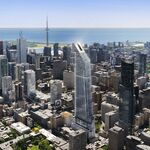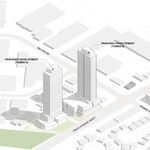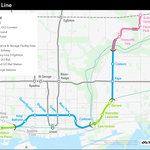Yonge-Dundas Square. College Park. The Eaton Centre. Then the street unfolds in theatres, soaring towers, and fine-grained 20th century retail, before reaching down to the Lake, and stretching past Bloor Street, midtown, uptown, out of town, and into a seemingly endless north. This is Yonge Street, Toronto's most famous thoroughfare, which forms the spine — and perhaps the heart — of the city. But it doesn't look it.
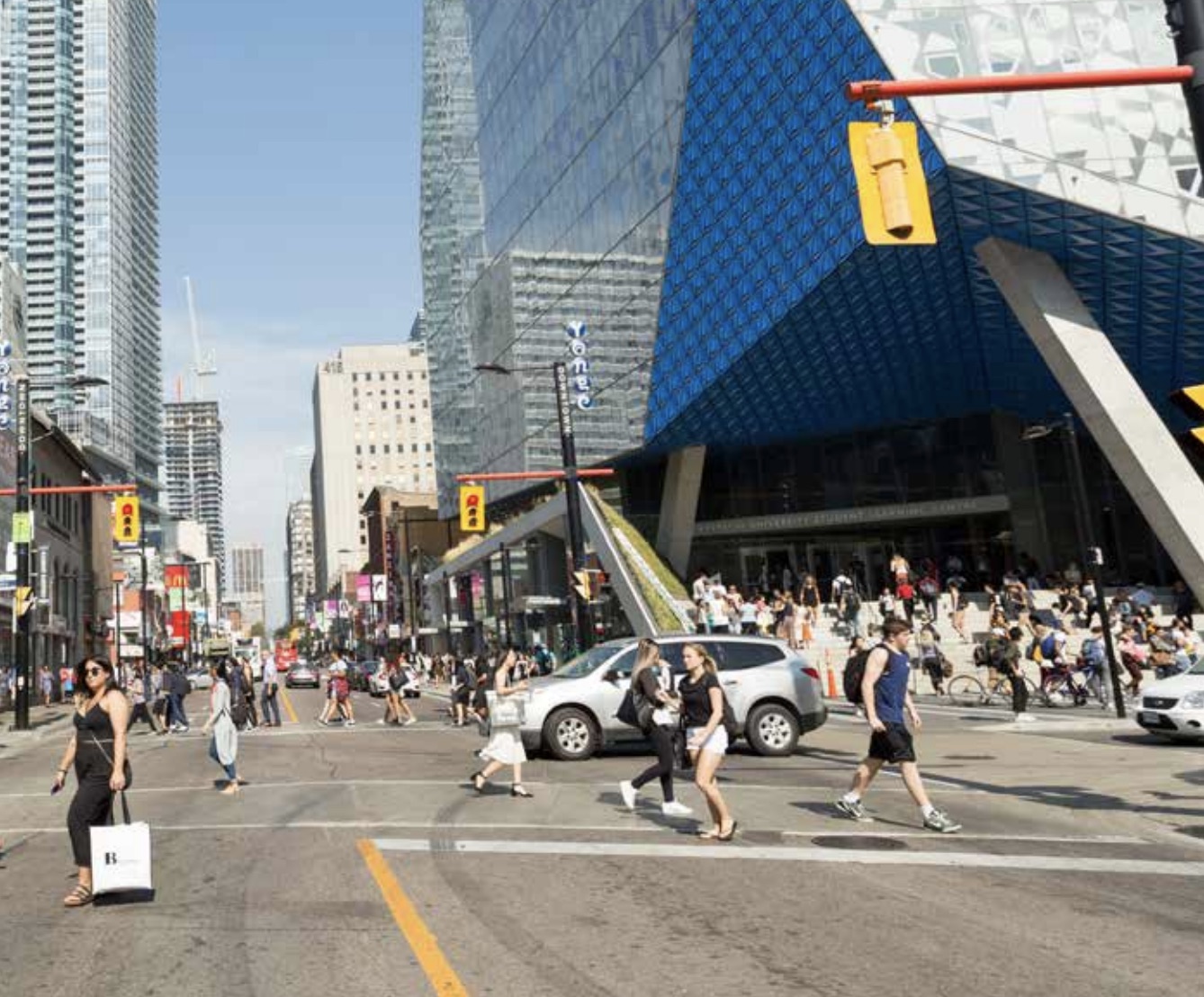 Yonge and Gould, where Ryerson meets Toronto. Photo by Dominic Ali via Ryerson CBI.
Yonge and Gould, where Ryerson meets Toronto. Photo by Dominic Ali via Ryerson CBI.
Looking north from Dundas, relatively narrow sidewalks, lack of public amenities, and the generally car-dominated street-level experience belie the reality of a pedestrian and transit hub. For a street that ought to be the city's front doorstep, its infrastructure suggests anonymity. That could soon change. Joining the ongoing push to re-make downtown Yonge Street, a new report from Ryerson University's City Building Institute (CBI) argues for a pedestrian-oriented public realm that would transform the street into an 'outdoor living room' — and a showpiece for the university itself.
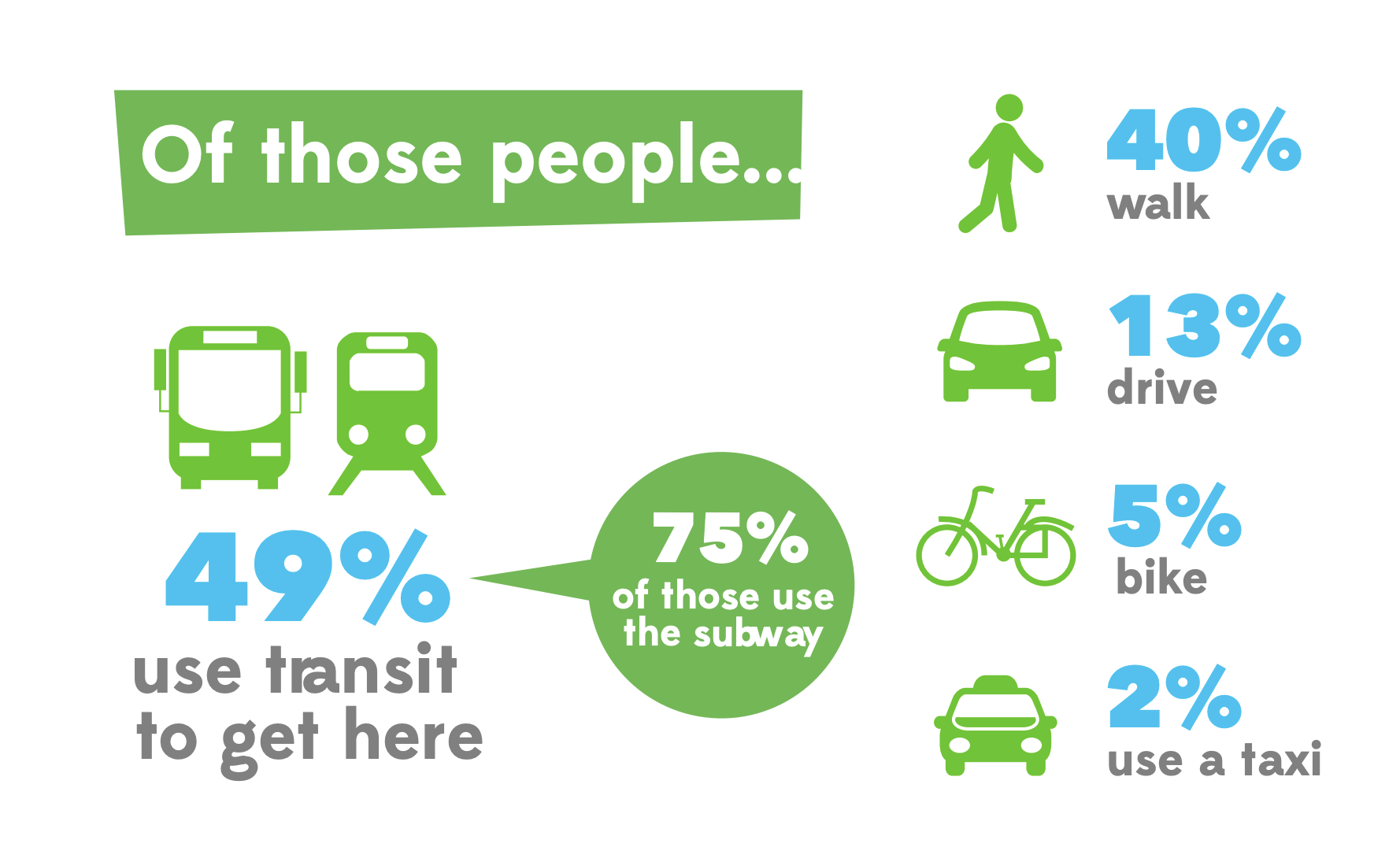 A Yonge Love graphic showing road users on Yonge Street. Image via Downtown Yonge BIA.
A Yonge Love graphic showing road users on Yonge Street. Image via Downtown Yonge BIA.
Spearheaded by Dr. Zhixi Zhang, Can Ryerson Benefit From A Better Yonge Street? builds on a robust body of research and public consultation regarding the corridor's future. Through a combination of public input and hard data, the Downtown Yonge BIA's 2014 Yonge Love community consultation series made a compelling case for the street's transformation. Studying the stretch from Grosvenor to Richmond, the data showed that only 13% of the area's almost 600,000 daytime visitors are drivers, compared to the 40% that walk, and the 49% that use public transit. Unsurprising then, that Yonge Love respondents' greatest priorities were for a walkable (70%), clean (69%), and pedestrian-friendly (67%) environment.
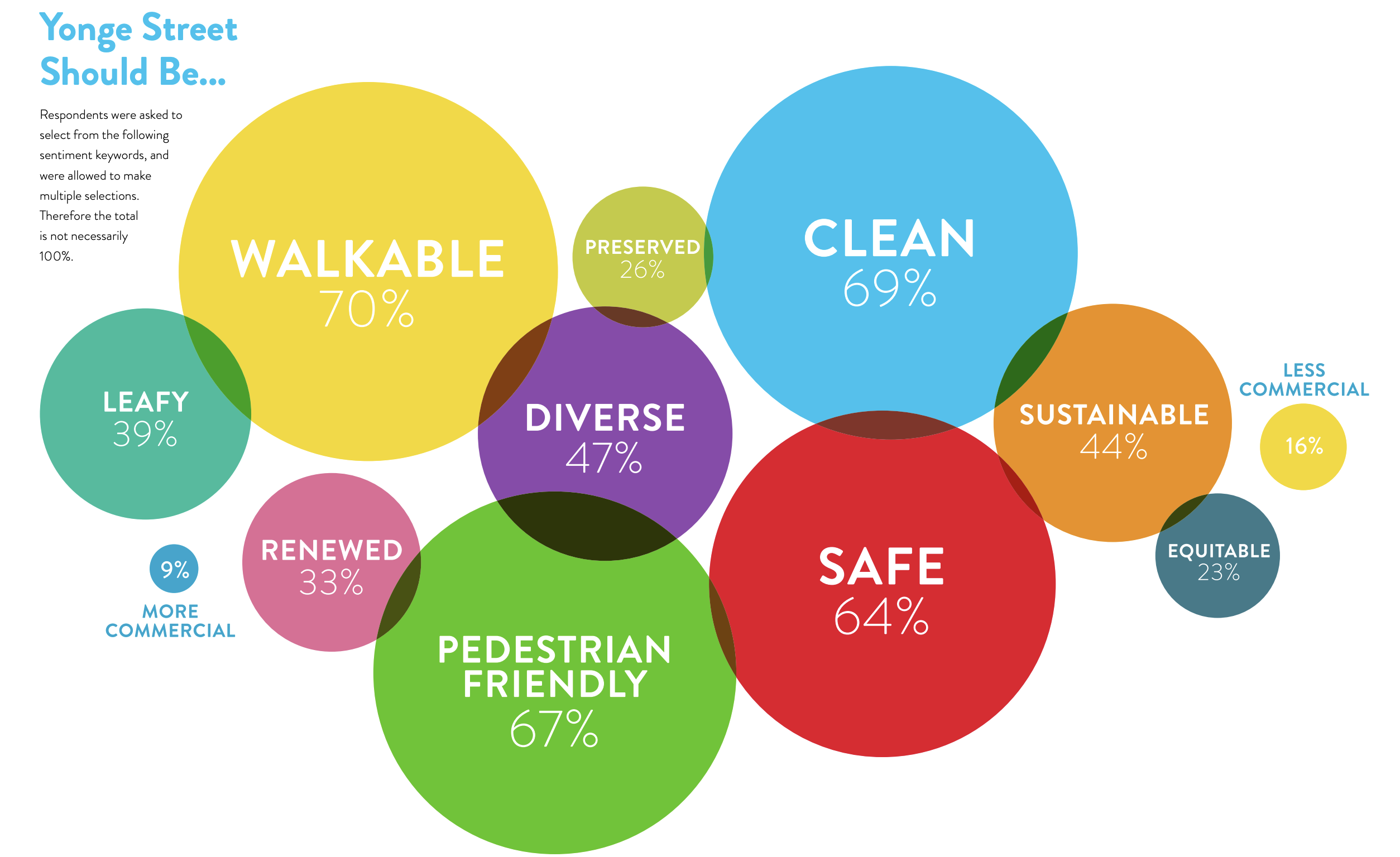 Yonge Love survey results.
Yonge Love survey results.
More recently, the Downtown Yonge BIA's 22 traffic counters found that pedestrians consistently outnumbered vehicles in the year spanning October 2017 and 2018 — even during the winter months. According to the City of Toronto, "[d]aily pedestrian volumes on Yonge Street at Dundas Street are approaching 100,000 per day and represent Toronto's busiest intersection." If the recent poll indicating that the King Street transit and public realm pilot has attracted more shoppers is any indication, a more pedestrian-friendly environment could be a boon for businesses. More importantly, an improved pedestrian experience offers opportunities to create a more safe, accessible, and inclusive public realm.
 The Downtown Yonge BIA's breakdown of street-level activity.
The Downtown Yonge BIA's breakdown of street-level activity.
But what about Ryerson? Despite a campus situated just northeast of Yonge & Dundas, the university has lacked a strong presence on the street. That's beginning to change. With the opening of the school's Student Learning Centre (SLC) in 2015, the university laid out a grand welcome mat to the campus, with a cascade of public seating and hangout space fronting a building that angles out towards Yonge. Today, the intersection of Yonge & Gould is a compelling and spontaneous place, and a prime spot for witnessing some of Toronto's coolest soccer ball tricks. It all hints at a latent campus energy, which dissipates as the Gould Street campus gives way to Yonge.
For Ryerson, the benefits are obvious. Through better integrating pedestrian-oriented Gould Street with Yonge, the report argues that the university has an opportunity to assert a stronger civic identity through partnerships with the City of Toronto and the Downtown Yonge BIA. While pedestrian activity creates more active street life — which can foster a greater sense of belonging and inclusion — the report also highlights opportunities for green urbanism:
If Ryerson were to engage in the Downtown Yonge Street improvements, it could open opportunities to partner with the City of Toronto and the Downtown Yonge BIA on longer-term sustainability initiatives in the neighbourhood. For example, promoting green infrastructure and pedestrian-focused environmental design encourages carbon footprint reduction and advances wellness initiatives. Utilizing pedestrian-priority pathways as linear parks or green streets can further the benefits to the city. Pedestrian-friendly urban spaces also help diversify mobility options and promote active transportation.
Design is political. An accessible public realm that feels welcoming and open is also a driver of equity and harmonious diversity, and a conduit for an improved relationship between the campus and the city. Using case studies from across North America — including U of T's Willcocks Common, and Ryerson's own Gould Street — the report finds consistent improvements to safety and street-level activity amidst positive environmental impacts and more robust place-making.
Yonge Street is a trickier context. Unlike Willcocks Common, Gould Street, or McGill's recently pedestrianized McTavish Street (which is another of the report's case studies) Yonge is not truly part of the university campus. It's a major artery in one of North America's largest cities, and a beautifully messy mix of uses, users, and stakeholders. It makes re-imagining the public realm more difficult — and potentially all the more rewarding.
Ryerson's advocacy builds on the back of the strong public support evidenced through the Downtown Yonge BIA's polling. The BIA's own advocacy means that the business community is also at the table. What's more, the public realm improvements planned via the City of Toronto's ongoing Yonge TOmorrow Study — initiated by Councillor Kristyn Wong-Tam — will provide crucial support from the municipality. The alignment of public, institutional, business, and government support, makes for a rare opportunity.
Yonge Street is crucial to Toronto, as a part of daily life, and as a part of the civic consciousness. The relatively inexpensive task of creating an improved public realm is surely overdue, and the energy of local stakeholders makes it all the more urgent.
So what's the hold-up? Despite our former Mayor's claims about a "war on the car," Toronto mostly remains a city built to serve it. Last week, City Manager Chris Murray pointed out that the Gardiner Expressway alone accounts for 53% of the City's State of Good Repair Budget over the next decade. It moves only 3% of commuters. The disparities between drivers and everyone else were just as striking for the King Street Traffic Pilot, the Bloor Street bike lanes, and now, for downtown Yonge Street. The opportunity is here. Let's not squander it.
* * *
A full copy of the Ryerson City Building Institute's Can Ryerson Benefit From A Better Yonge Street? report is available here.
Stefan Novakovic is a Toronto-based writer specializing in urbanism and architecture. Previously an assistant editor at UrbanToronto, he now serves as the Associate Editor of Canadian Architect magazine. Follow him on Twitter @NovakovicTO.
UrbanToronto has a new way you can track projects through the planning process on a daily basis. Sign up for a free trial of our New Development Insider here.

 3.6K
3.6K 












